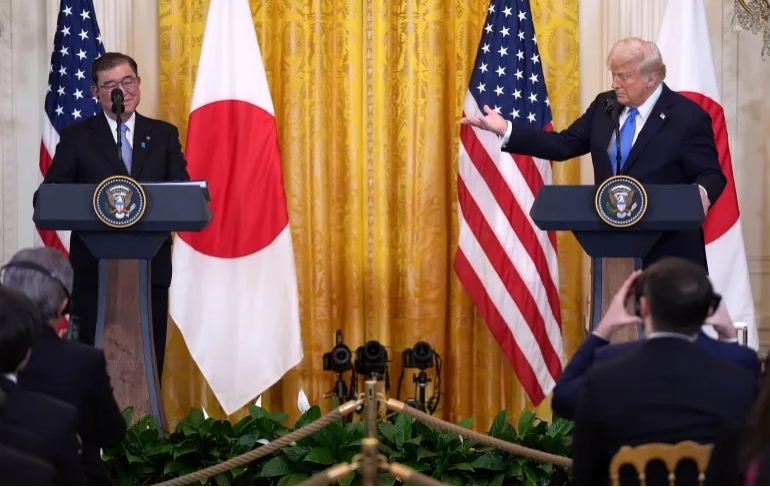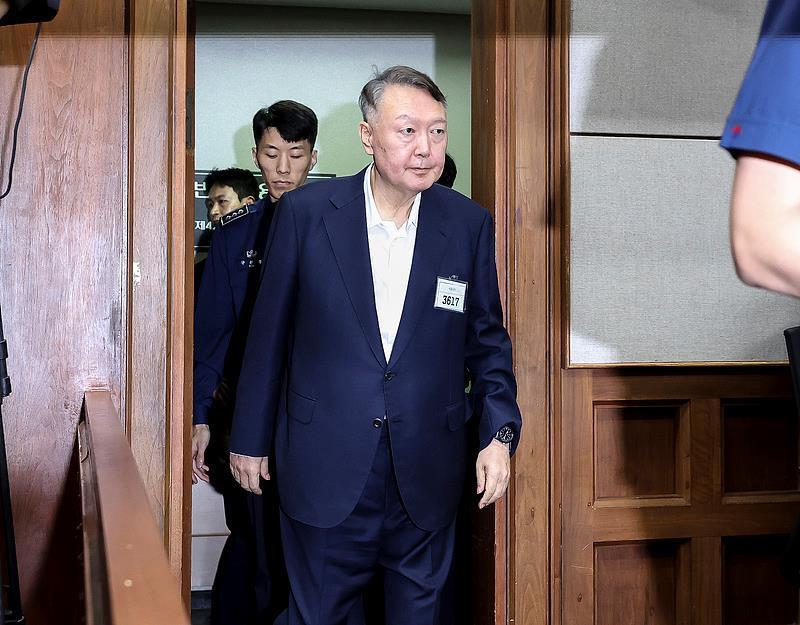
Behind a trade agreement called "the largest in history" by Trump is Japan's helpless compromise under the dual pressure of politics and economy, and the reality that global trade rules are reshaped by powerful forces.
On July 22, US President Trump announced on social media that he had reached an "unprecedented large-scale agreement" with Japan, reducing the tariff on Japanese goods exported to the United States from the original 25% to 15%. In exchange, Japan promised to invest $550 billion in the United States and open its agricultural product market. As soon as the news came out, the Tokyo stock market rose sharply, the Nikkei index soared 3.5%, and Toyota's stock price soared more than 14%. The market welcomed the "tariff amnesty order" that had been threatened for nearly half a year with a warm rise.
The core of the agreement is Japan's commitment to invest $550 billion in the United States, covering automobile manufacturing, energy development and semiconductor industries. Trump particularly emphasized that the United States will get "90% of the profits", although the specific operation of this mechanism has not yet been clarified. U.S. Commerce Secretary Lutnick bluntly described the fund's operating model: "This is actually the United States saying, we want to build a generic drug factory, or a semiconductor factory, and then Japan will provide financing."
The decision-making power of the $550 billion investment is entirely in the hands of the United States, creating a new trade relationship of "where the United States points, Japan invests." As another part of the agreement, Japan will immediately increase its imports of U.S. rice by 75% and purchase $8 billion worth of U.S. agricultural and energy products, including corn, soybeans, fertilizers, bioethanol and sustainable aviation fuel. The White House also revealed that Japan has pledged to purchase 100 Boeing aircraft.
The agreement was reached at a time when Japanese Prime Minister Shigeru Ishiba was facing a severe political crisis. On July 20, Japan's ruling party suffered a crushing defeat in the Senate election and lost its majority seats. The approval rating of Shigeru Ishiba's cabinet fell to 30%, facing pressure from within the party to abdicate.
Under internal and external difficulties, the team of Japanese negotiator Ryomasa Akasawa finally compromised and reached an agreement with the United States on July 22. Shigeru Ishiba insisted at a live press conference that increasing imports of U.S. rice "will not sacrifice Japanese agriculture." However, this promise is in stark contrast to the estimates of Japan's Ministry of Agriculture, Forestry and Fisheries, which predicts that U.S. rice may occupy 10% of the Japanese market, resulting in the unemployment of about 300,000 rice farmers.
Since the beginning of this year, domestic rice prices in Japan have continued to rise. In April, the national consumer price index showed that rice prices rose 98.4% year-on-year, the largest increase since 1971. Opening the market under the structural crisis of the agricultural system will undoubtedly make small farmers in Japan face more severe survival challenges.
For the Japanese auto industry, although the 15% tariff is higher than Japan's previous expectation of 5%, it is a stop-loss option compared with the 25% tariff threatened by Trump on July 8. The 15% tax rate will still reduce the annual profits of Toyota and other automakers by about 8%.
The more far-reaching impact lies in the risk of industrial hollowing out. In exchange for tariff concessions, Toyota, Honda and other automakers have promised to invest $10 billion in new production capacity in the United States in the next three years, which will lead to the transfer of core component supply chains to the United States. Data from the Japan Automobile Manufacturers Association shows that every $100 million in production capacity transferred will reduce 200 local jobs.
The agreement also contains strict terms: Japanese automakers need to transmit production energy consumption data in real time, access the U.S. Department of Energy's blockchain system, and submit supply chain stress test reports every quarter, which essentially exposes the production process completely to U.S. supervision.
U.S. negotiators have made no secret of using the U.S.-Japan agreement as a "template" for negotiations with the EU. Finance Minister Bessant made it clear that whether other trading partners can obtain similar reciprocal tariffs depends on whether they can provide similar financing tools.
Facing the deadline of the U.S. 30% tariff on August 1, the European Commission is pushing forward countermeasures against 93 billion euros of U.S. goods. Bessant downplayed it as "a negotiating strategy, and if I were in their position, I would do the same."
Economists believe that the agreement is expected to become a reference standard for other countries to negotiate with the United States, providing a certain stability to the turbulent global trade environment. Although the 15% tariff is still much higher than the average level of 2.5% before the epidemic, it is more conducive to corporate decision-making than the previous uncertainty.
Trump billed the agreement as "probably the biggest deal ever" and claimed it would create "hundreds of thousands of jobs." However, U.S. automakers expressed strong dissatisfaction, pointing out that while tariffs on imported cars from Japan were reduced, import tariffs on parts from their factories in Canada and Mexico were still as high as 25%.
There are huge doubts about the actual implementation of the $550 billion investment. Historical experience shows that the implementation rate of trade agreements during Trump's tenure is generally low - only 32% of the $40 billion investment promised by Mexico in the 2018 US-Mexico-Canada Agreement was ultimately fulfilled. Of the total $550 billion, only $120 billion has a clear timetable.
The agreement is called the "Plaza Accord of 2025" by some scholars, and it echoes the agreement in 1985 that forced the yen to appreciate: it was the appreciation of the yen that led to the asset bubble, and now it is capital outflows and market openings that may exacerbate the hollowing out of Japan's industry. Takashi Yamada, professor of economics at the University of Tokyo, made a pointed comment: "We have traded our technological competitiveness for the next 30 years for political stability today."
Financial markets reacted positively to the agreement in the short term, but the superficial gains cannot mask underlying concerns. American automakers have begun to complain about the unfairness of the agreement, and the Japanese Agricultural Cooperatives have launched a nationwide protest. When asked whether the European Union would follow Japan's example and provide similar investments, U.S. Commerce Secretary Lutnick said skeptically: "Europe will not give us $1 trillion for investment."
The rules of global trade are being rewritten - not through equal consultation, but through power pressure and economic coercion. In this game of great powers, Japan's choice may be just the first domino to fall among all the countries facing the U.S. tariff stick.

The South Korean political arena has once again been embroiled in a public controversy over a judicial investigation that has shaken the entire nation.
The South Korean political arena has once again been embroi…
On the morning of December 29th local time, the precious me…
According to the US media Barchart, recently, the fluctuati…
On December 29th, Mar-a-Lago in Florida, USA, witnessed a h…
SoftBank Group announced on Monday that it has agreed to ac…
Recently, the US State Department issued a visa ban, adding…